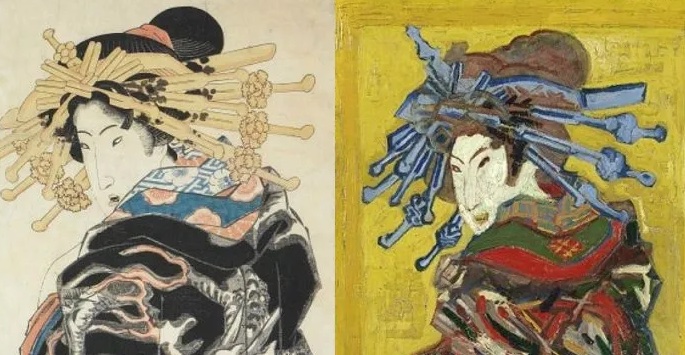Mapping | Text |The concept of culture developed in Europe in the 18th century in the context of an expansion of world knowledge and the possibility of historical and regional comparisons. Since the end of the 18th century it has been a term for the selfdescription of Europe and its selfreflexion. One origin of European modernity stems from the liberation from feudalism and refers to the revolutions in the Christian European civilisation as crucial reference point.
In an the evolutionary tendency since the enlightenment it has expanded into the idea of progress with a constant need for selfaffirmation. The confrontation with the foreign, like Asia in the military, economic, political, cultural and scientific sense, is necessary to assure one’s own identity. In classic theories of the time it was assumed, that the Western pattern of modernization would spread automatically, and that, due to different preconditions, modernization were to initially adopt different characteristics in various parts of the world, they would eventually converge by emulating the Western pattern. The concept of culture had this comparative component since its birth in the 18th century, to draw boundaries between cul tures to make a cultural selfidentification possible. But what happened when Japan looked at the West with its inherited Western knowledge and semantics?
reference :: Yoshimi Takeuchi, Shmuel Eisenstadt, Harry Harootunian, Yasunosuke Gonda, Walter Benjamin, Raymond Williams, Noburo Kawazoe, Takemitsu Morikawa
日本のアダプテッドモダニズム
このテキストは、西洋の文化が日常生活に浸透し、工業化が進み、社会の契約が 問われるようになった日本の近代化の進展を描いています。農村から都市への大 量移住と女性労働力の形成は、多くの人々に疎外された生活をもたらし、また芸 術制作のための肥沃な土壌を作り出しました。 第一次世界大戦後、日本の芸術家たちは、ヨーロッパで流行する芸術様式を目の 当たりにするだけでなく、ますますその共犯者となり、国際的なコミュニティー に参加するようになったのです。彼らは単に西洋の形式を模倣するだけでなく、 最も盛んな芸術家や知識人と目線を合わせて交流した。彼らの中には日本を訪れ る者もおり、近代的なコミュニケーションとマスメディアによって、日本は現代 の言説の輪郭から中心へと回り込んでいったのです。 この国際的なサークルの一員となり、関連する議論を地元の聴衆に伝 えることで、日本の社会のより賢明な部分は、より西洋に流れていっ たが、このプロセスに参加しようとしない残りの人々とも分離してい ったのである。現代の消費主義、娯楽、生活様式が街角にもたらすフ ァンタジーやスペクタクルに魅了され、経済的に参加できない人々や 新しい資本主義がもたらす新しい力学に違和感を覚える人々は、伝統 文化のシェルターの安全性に反対し、それを強制したのです。それは 政府の指導からの自己決定と自律の問題であるだけでなく、主として 1920 年代の大衆文化と消費に直面して生じた文化的棲み分けだったの である。
